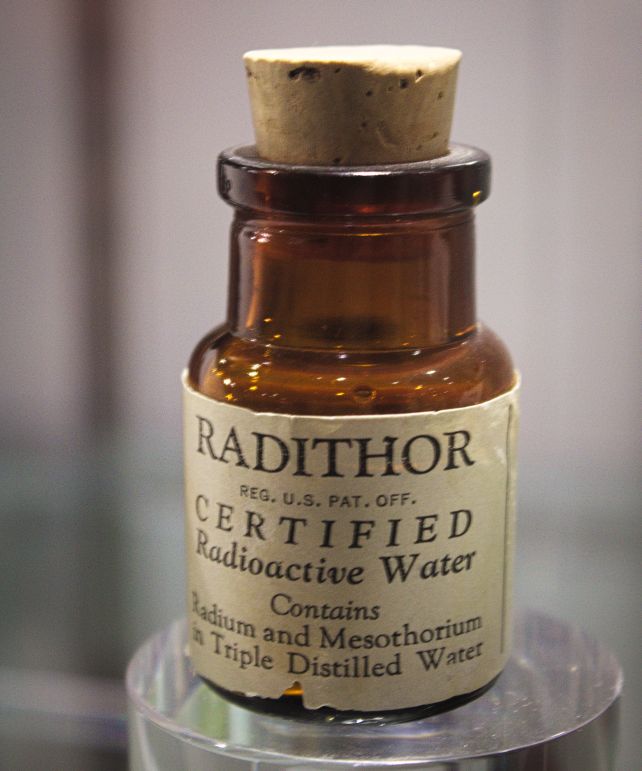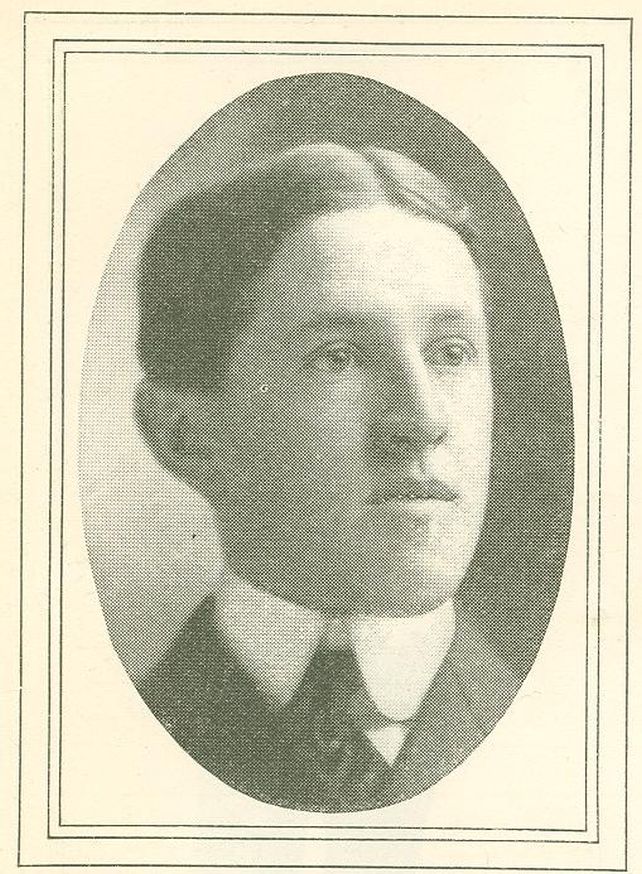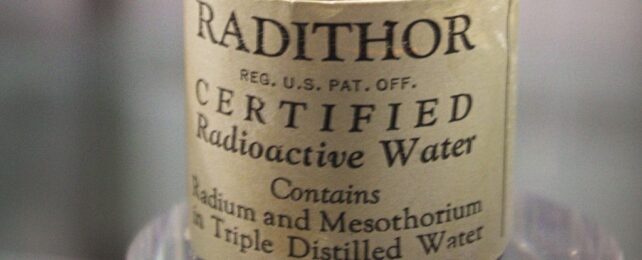Bleach and chloroquine need to take a seat. Snake oil in the past has gone far harder – enough to give one man a massively fatal dose of radiation that riddled his body with cancer and literally disintegrated his skull before he died in 1932.
The patient in question was Eben Byers, and he was so taken with a "miracle" tonic named Radithor that he dosed himself with it several times a day.
The problem? The active ingredient in Radithor was radium. Yes, that radium. The one that forms from the radioactive decay of uranium, that is radioactive itself, and exposure to which is generally considered not a very good thing.
Supplements and patent medicines that don't necessarily do what they say on the tin have been around for a long time. But the early 20th century was a strange time. In the wake of the fin de siècle, the world was filled with optimism, and new discoveries waited around every corner.
Marie Skłodowska-Curie and Pierre Curie had discovered radium in just 1898, and in the first quarter of the 20th century, this miraculous glowing metal was quickly hijacked as a health treatment.
It was a popular additive in products such as toothpaste and hair cream, and even food. And then, in 1918, along came salesman, quack, and liar William J.A. Bailey, with Radithor – basically, water infused with salts of radium-226 and radium-228.

By then, Bailey had done a stint in prison for fraud, and later separately been leveled a hefty fine for the same. Nevertheless, he forged full steam ahead with Radithor, a product that supposedly cured a broad number of ills.
Enter Eben Byers, wealthy Pittsburgh socialite, former amateur golf champion, and industrialist. In 1927, he was 47 years old, and had injured his arm falling from the sleeping berth of a train. His physiotherapist, Charles Clinton Moyar, recommended he take Radithor.
Byers took to the medicine with gusto. From December 1927, he averaged three bottles of Radithor a day, keeping to this regime for two years. His enthusiasm for Radithor was so great that he extolled its virtues, gave cases to his friends, even fed some to one of his horses.
He consumed over 1,000 bottles of the stuff… until, in 1930, his teeth started falling out. Then, alarmed, he stopped – but it was too late.
Radioactive elements produce three kinds of nuclear radiation as they decay: alpha particles, beta particles, and gamma radiation. Alpha particles are pretty weak; they can be stopped by a piece of paper, and cannot penetrate intact skin.
But internally, alpha emitters can really mess you up. Radium is chemically similar to calcium; when ingested, it's mostly deposited in the bone, sitting there emitting radiation and doing a whole lot of tissue damage.
The splitting headaches and jaw pain reported by Byers were, Manhattan X-ray specialist Dr. Joseph Manning Steiner recognized, similar to the symptoms reported by the so-called Radium Girls, the female factory workers who became ill painting timepiece parts with glowing radium paint.
There was nothing that could be done for Byers, but the Federal Trade Commission (FTC) embarked on compiling a case against Bailey. In September 1931, FTC attorney Robert Hiner Winn visited Byers at his Long Island home to interview him about his experience.

"Young in years and mentally alert, he could hardly speak," Winn reported. "His head was swathed in bandages. He had undergone two successive operations in which his whole upper jaw, excepting two front teeth, and most of his lower jaw had been removed. All the remaining bone tissue of his body was slowly disintegrating, and holes were actually forming in his skull."
On Byers' death on 31 March 1932, his remains were autopsied. His death was caused by cancer that riddled his bones and abscessed his brains. An estimated 36 micrograms of radium remained distributed throughout his bones. A fatal dose of radium can be as little as 2 micrograms fixed in the bones. Byers' body was so radioactive it was buried in a lead-lined coffin.
It would probably be small comfort to Byers, but his death led to the inclusion of radioactive substances under the purview of the Food and Drug Administration. Radithor was shut down; the radioactive patent medicine industry was dead.
Scientists exhumed Byers' remains in 1965 to study the effects of radiation on human remains; he was still dangerously radioactive. In fact, he was more than twice as radioactive as they thought he might be, based on his self-reported Radithor consumption.
Since radium has a half-life of 1,600 years, he's unlikely to become significantly less hazardous anytime soon. Following the exhumation, Byers was sealed back up in his lead-lined coffin and left to rest in faintly, dangerously, glowing peace.
